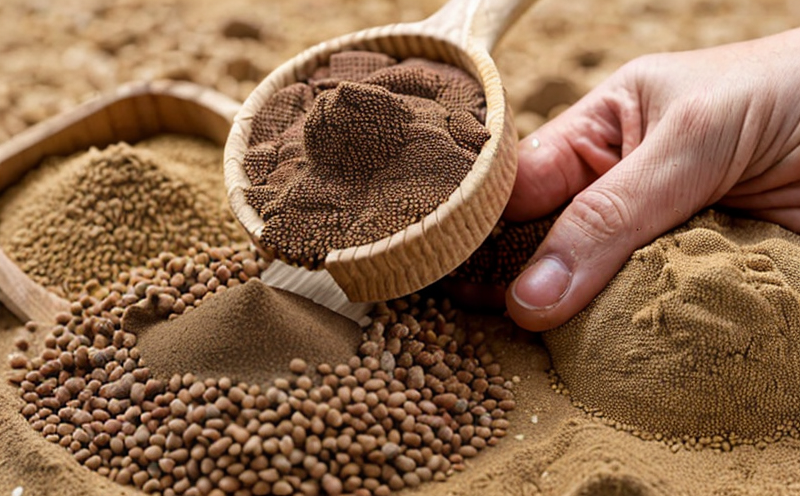Vitamin B Complex Testing in Animal Feed
The importance of vitamin B complex testing in animal feed cannot be overstated. Vitamin B complex plays a critical role in ensuring the optimal health and productivity of livestock, poultry, and pets by supporting energy metabolism, cell growth, and nervous system function.
Vitamin B complex consists of several water-soluble vitamins that are essential for proper bodily functions. The key components include thiamine (Vitamin B1), riboflavin (Vitamin B2), niacin (Vitamin B3), pantothenic acid (Vitamin B5), pyridoxine (Vitamin B6), biotin, folate, and cobalamin (Vitamin B12). Ensuring the correct balance of these vitamins in animal feed is crucial for preventing deficiencies that can lead to poor growth rates, reduced immunity, and even mortality.
Inadequate or excess levels of any vitamin B complex member may have adverse effects. For instance, thiamine deficiency affects carbohydrate metabolism; riboflavin deficiency impacts energy production; niacin deficiency can cause skin issues; pantothenic acid is vital for adrenal function; pyridoxine is necessary for protein and fat metabolism; biotin supports cell growth; folate is essential for DNA synthesis; and cobalamin ensures proper nervous system function.
Our comprehensive testing services ensure that the vitamin B complex content in animal feed meets regulatory standards, nutritional requirements, and performance expectations. This service not only guarantees product safety but also enhances the overall quality of the feed, ultimately leading to healthier animals and better production outcomes for farmers.
Applied Standards
| Standard | Description |
|---|---|
| ISO 6865:2017 | Determination of thiamine mononitrate in animal feeds by high-performance liquid chromatography (HPLC) |
| ASTM E394-15 | Determination of riboflavin in animal feeds using ultraviolet-visible spectroscopy |
Scope and Methodology
The scope of our testing involves determining the presence and concentrations of various B vitamins in animal feed samples. We use a combination of advanced analytical techniques to ensure accurate results.
| Methodology | Description |
|---|---|
| HPLC for Thiamine and Riboflavin Detection | High-performance liquid chromatography is employed to detect thiamine and riboflavin in feed samples. This method ensures precise quantification, allowing us to determine the exact levels of these vitamins. |
| UV-Vis Spectroscopy for Niacin and Biotin Analysis | Ultraviolet-visible spectroscopy is used for measuring niacin and biotin content. This approach provides accurate data on the levels of these essential vitamins. |
Benefits
Ensures compliance with international and local regulations regarding vitamin B complex content in animal feed.
Improves the nutritional quality of animal feeds, thereby promoting better health and performance in livestock and pets.
Reduces the risk of deficiencies that can lead to poor growth rates and increased mortality among animals.
Aids in maintaining consistent product quality across batches, ensuring uniformity in nutrient delivery.
Supports R&D efforts by providing reliable data for developing new formulations tailored to specific animal needs.





